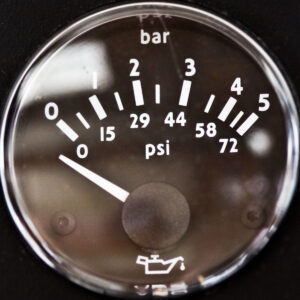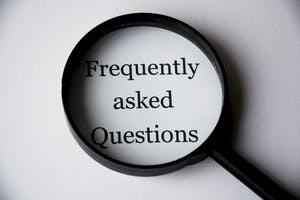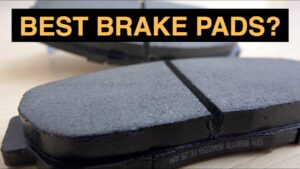One of the most important fluids that vehicles need is engine oil. Your car’s motor oil greases up various segments of the motor, decreasing contact. Oil pressure is perhaps the main boundary in a’s motor. You need to find ways to keep up the correct motor oil pressure. Low motor oil pressing factor can make harm distinctive motor segments, meaning something bad for your vehicle. Oil pressure is higher when the motor is cold because of the expanded thickness of the oil and speeds up until the help valve in the oil pump opens to redirect the overabundance stream. Oil pressure drops to zero while Driving under hot standing by conditions, and the base pressing factor permitted by the maker’s resiliences is typically given now.

The low oil pressure light on your dashboard, similar to the rest of your onboard demonstrative framework, is immediate correspondence from your car’s PC about what’s new with your vehicle. At the point when this light goes ahead, nonetheless, like a glimmering check motor light, you’ll need to quit driving, turn off the motor, and once cool, check the oil level.
Table of Contents
Reasons Why Oil Pressure Drops While Driving:-
There are many reasons for which the oil pressure drops down to zero while driving. Some of these are as follows:-
1. Not Enough Or Destroyed Oil
Support on any vehicle is vital to keeping it out and about. An oil change ought to consistently be on your daily agenda each 3-6 months or between 3,000 – 5,000 miles. This guarantees you’ll generally have spotless, new oil coursing through your motor.
2. Engine Wear
Oil moves throughout the engine through the driving rod bearing and the camshaft direction. If the territory has widened due to worn parts, oil streams also effectively lessen oil pressure. The oil siphon should compel oil through thin territories under course and ways. These are the regions that form pressure in the framework since they control the pace of the stream. The quicker the motor moves, the higher the stream rate and pressing factor.
3. Faulty Oil Pressure Gauge

Your engine may have a lot of oil in the dish and it very well might be completely fine, yet the difficulty exists in the oil pressure measure. Electrical issues and issues with the wiring can make the measured break down and produce a bogus perusing. An expert should play out a mechanical oil compel test to decide if a pressing factor is absent or not.
4. Obstructed or Dirty Air Filter
Oil channels assume a vital part in keeping up oil pressure. If the channel gets obstructed, it will expand the pressing factor and diminish the stream. A pressing factor alleviation valve on the oil channel keeps the pressing factor from getting excessively high. On the off chance that it’s harmed, it will not have the option to manage its work, permitting motor oil to stream all the more effectively, lessening pressure.
5. Oil Viscosity
Higher consistency oil is thicker and doesn’t stream as fast as more slender oil. This influences the oil pressure contingent upon the season. High thickness oil forestalls oil pressure from building quickly.
6. Engine Overheating
An overheating motor isn’t only a cerebral pain for the driver. It’s hard for the motor as it makes the oil dainty, forestalling pressure developing. It has a comparable impact as utilizing a lower thickness oil than the vehicle requires.
7. Defective Oil Pump
While not as normal, a flawed oil siphon may make more extensive paths between the rotors causing a drop in the pace of the stream.
8. Destroyed Internal Components
Each segment in the engine adds to the burning interaction. At the point when these segments fall flat, the oil may inadvertently enter the ignition chamber and get scorched, bringing about a drop in the motor oil level and pressing factor. This is handily perceived as it frequently creates a blue smoke that exits through the tailpipe.

What To Do If Oil Pressure Drops To Zero While Driving?
A drop in motor oil pressure is inconvenient to your vehicle’s well-being. To avoid costly fixes, check and top up your motor oil routinely. Search for oil with the correct thickness rating (as suggested by your producer). If your pressing factor check or the oil siphon is harmed or destroyed, have the part replaced. Search for indications of outer oil spills. As a general rule, outer oil holes can be tended to by supplanting hoses and lines.
On the off chance that you speculate an inward oil spill, counsel an auto fix. Shortcircuits and open circuits can likewise prompt wrong pressing factor alerts. Utilize a DMM and fix manually to follow the proper circuits for a fix. One approach to fix oil pressure is to utilize a higher-thickness oil, for example, changing from 5W-20 to 10W-30. This slight change in oil thickness can compensate for the expanded bearing leeway, expanding oil pressure back to typical.

What Is The Cost To Fix Low Oil Pressure?
While Fixing the low oil pressure there is some cost that is to be charged.
The normal expense for motor oil light analysis is somewhere in the range of $88 and $144. Work costs are assessed somewhere in the range of $88 and $144. This reach does exclude assessments and expenses and doesn’t factor in your particular vehicle or novel area.
What Causes Oil Pressure To Drop While Driving?
Oil Level Is Too Low
Over the long run, motors consume oil all the more rapidly. This is because of cylinder rings wearing, seals spilling, etc. Or on the other hand, you might find you have an oil spill. Along these lines, you might see a quicker drop in oil pressure contingent upon the age and state of your vehicle.
Will A Vehicle Run With 0 Oil Pressure?
At the point when the oil tension in the framework is low or the oil is low, the motor can be demolished, and the engine can be harmed. It is fitting to quit driving and have the issue settled quickly assuming that you see the oil light on while driving or on the other hand assuming that the vehicle is running
What Are The Side Effects Of A Weak Oil Siphon?
A glance at the three principal signs that you want to fix or change your oil siphon: low oil pressure, high motor temperature, and clamor.
…
Normal Oil Pump Failure Symptoms
Low oil pressure. An awful oil siphon will lose the capacity to siphon oil through your framework appropriately. …
Expanded motor working temperature. …
Clamor.
Conclusion
Low oil pressure is horrendous for any car motor, and if oil pressure drops to zero while driving, it can harm your motor with perpetual harm in practically no time. If the oil light glints on and off while the vehicle is halted or at an inactive, there might be an issue with the oil sensor or the pressing factor is excessively low. In any event, the motor ought to have 5 PSI when not moving.
On the off chance that the PSI is under 5, this will trigger the oil light and cause it to glint now and again. On the off chance that the light flashes while the vehicle is moving, the oil levels might be excessively low. Check the oil level and add engine oil to the vehicle, if necessary, and keep on observing the light. On the off chance that the oil was for sure low, the light should kill. If not, it is possible that the motor heading is worn. This is ominous as it might cause the motor oil to deliver oil from where it was once contained. A specialist should review and fix it right away.



